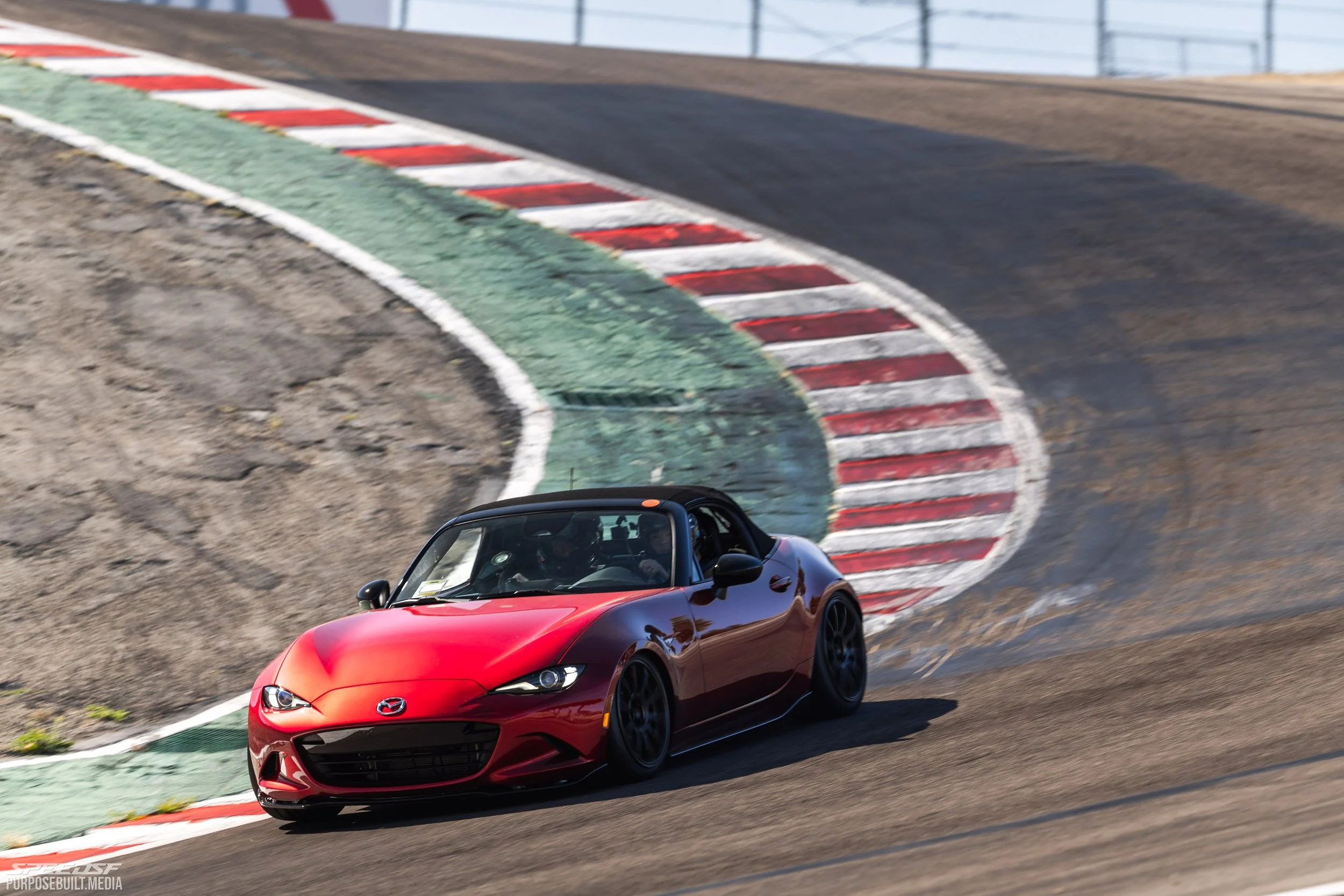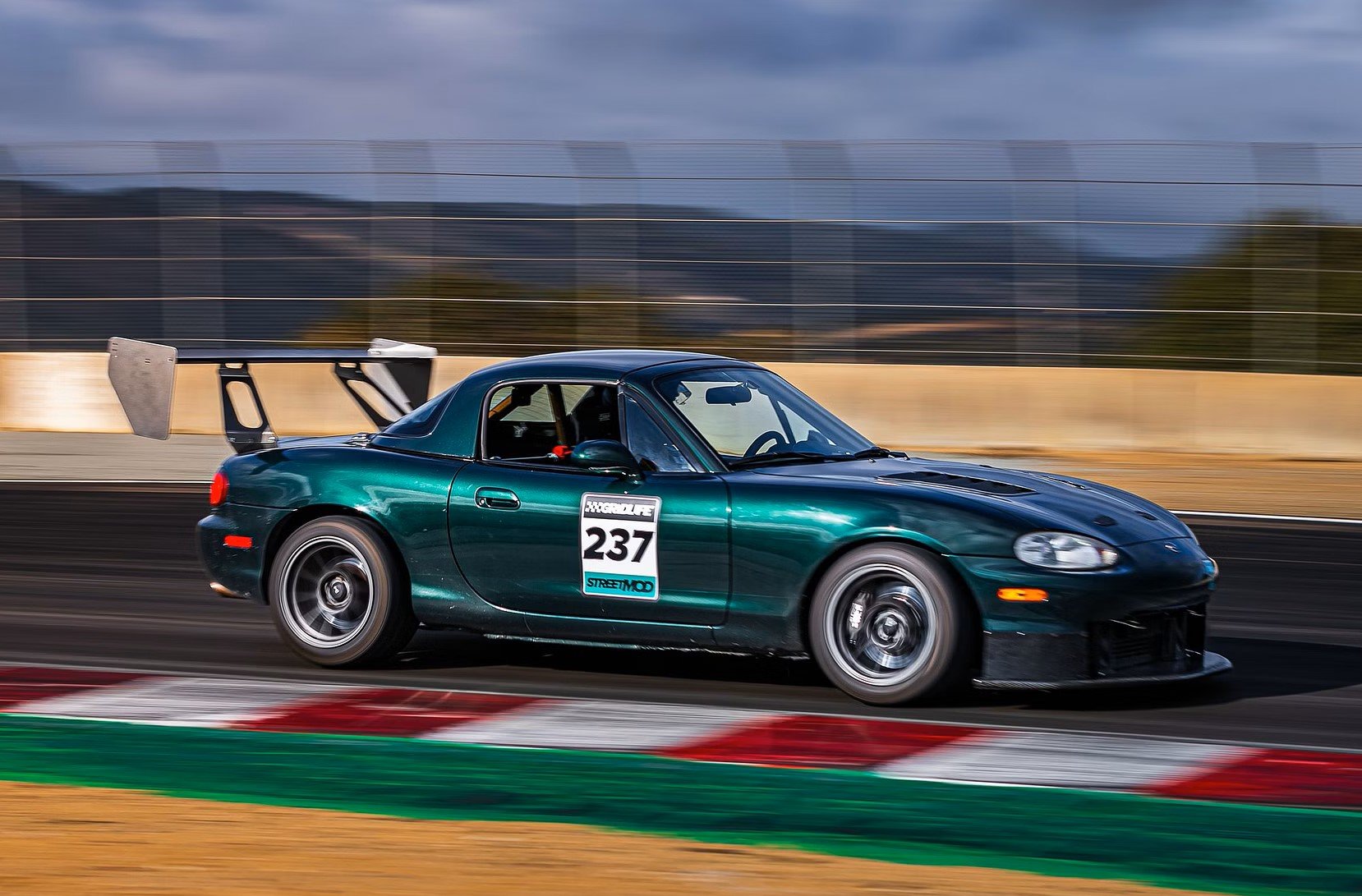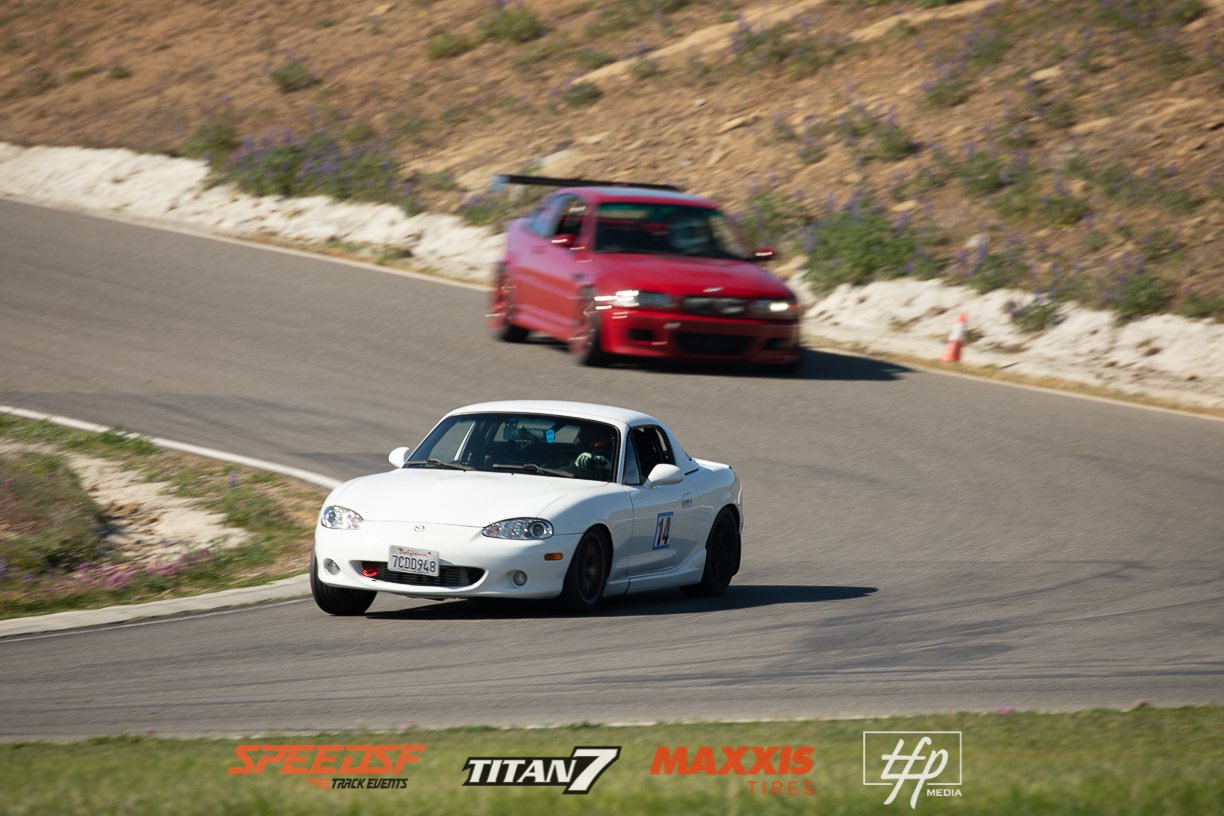
SpeedSF Blog
Every Build Has a Story – Meet the Cars of SpeedSF

Weize’s ND3 Miata: Sim Prep Fortification
After recognizing the financial realities of regular track driving, Weize decided to begin prepping for events with his simulator to ensure he made the most of his weekends.
Thanks to the accessible sim experience, he graduated from GR86 to ND3 - a shift highlighting his growing comfort with rotation - and started clicking off respectable times in no time.

Chris’ DCT-Swapped Miata: Grasping the Big Picture
By sourcing the right parts from retired race cars, using all his industry know-how, and taking the leap to install a BMW DCT in his NB, Chris Watson’s found an inspiring recipe for a reliable track-tuned Miata that can lap Laguna in 1:33.

Tom’s Miata: Frankenstein Fun
After getting tired of turbo problems with his Mini, Tom bought a cost-effective NC Miata to earn his spurs. After the stock motor blew, he decided to swap a Fusion 2.5-liter four to give the NC’s fantastic chassis some much-needed mid-range torque.

Alex’s FL5 Type R: Best of Both Worlds
The FK8 was too gaudy, the MX-5 was too cramped, and the FL5 was just right. When Alex was able to bring home a new Civic Type R for the occasional track outing, he knew he’d found the best possible compromise within his budget.

Andy's NC Miata: How To Make 300 Horsepower In 3 Not-So-Easy Steps
Intent on keeping costs low, Andy Boskovic started tinkering on a third-gen Mazda Miata. The need for more power was clear from the start, so he first tried to swap in a 2.5-liter engine from a Ford Fusion.
Then he turbocharged it.

Sam's Semi-OE Turbo Miata: Taking Advantage of Pre-COVID Pricing
After growing tired of his tuned Abarth, Sam scoped out a lighter, rawer, and more involving car. However, he’d grown accustomed to turbo power, so whatever he ended up buying couldn’t be anemic. Fortunately, his friend was looking to sell an NB with the whole Mazdaspeed powertrain already swapped.
